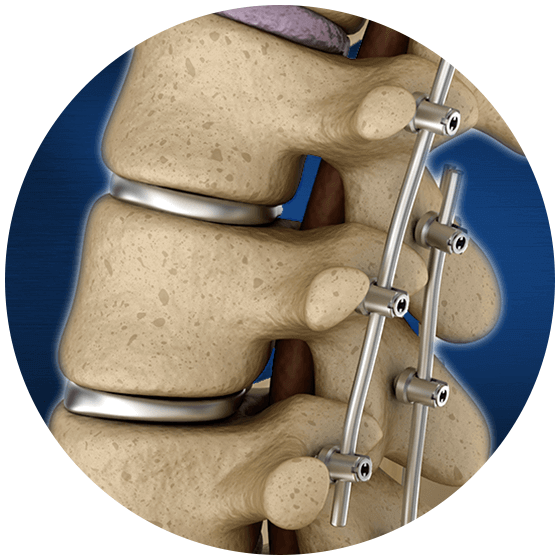Revision Spine Surgery

Revision Spine Surgery: Overview, Advantages, & Eligibility Criteria
Not all surgeons or surgical techniques are completely successful. As a result, sometimes back surgery is not always effective. The reasons for a failed back surgery are numerous. But, the most common include surgical error, misdiagnosis, or failure of the body to heal correctly after surgery. When this occurs, the pain and troubling symptoms that initially brought you into surgery can persist or even intensify. Although most do not want to endure another surgery after one has already failed, a second procedure may be necessary to provide relief. Revision spine surgery aims to rectify an unsuccessful surgery and to secure relief from debilitating, postoperative symptoms.
The first and perhaps most crucial step in the revision spine surgery process involves completing a thorough examination of your medical history, previous diagnosis, and an evaluation of the previous surgical procedure and subsequent results. This process will include a conversation with your new surgeon, physical examinations, and the use of imaging techniques such as X-rays, MRIs, or CT scans. Your physician will take care to correctly diagnose the root of your pain before moving forward. Once your doctor has developed a full picture of the problem, you and your surgeon will draft a plan of action for the revision procedure.
The type of revision procedure needed will depend upon your specific situation and circumstances. Old hardware may need to be removed and replaced and conditions that have developed as a result of the original procedure (such as pinched nerves) will be reversed. Surgery may be used in conjunction with other treatments as well, including pain management or physical therapy. Your specific course of action will depend upon your needs and particular requests.
Some of the benefits of revision spine surgery include the following:
Smaller incision sizes resulting in less blood loss, postoperative pain, and scarring
Minimal disruption to posterior muscles and ligaments that support the spine
Durable fusion materials promote the long-lasting success of the implant
New techniques allow for shorter observation periods in the hospital
The posterior approach is ideal for performing secondary procedures, like a laminectomy
Advantages of Revision Spine Surgery
No one wants to undergo additional surgery after one procedure has already failed. However, the benefits of revision spine surgery greatly outweigh the disadvantages of living with the pain of an unsuccessful procedure. In fact, if a failed spine surgery is not addressed, the results can leave an individual in a worse condition than before they initially sought treatment. Dr. George S. Naseef, MD, of the Advanced Spine Center is an expert in treating individuals who suffer from failed back syndrome. A board certified, fellowship-trained, and award-winning spine surgeon, Dr. Naseef and his team of specialists will help you to achieve the relief you deserve.
Eligibility Requirements for Revision Spine Surgery
If you have undergone a back surgery in the recent or distant past, and your symptoms have remained the same or even worsened, then you may be a candidate for revision spine surgery. Possible signs that you need revision spine surgery include: sustained or worsening symptoms, an inability to recuperate from your previous surgery, an increased reliance on pain medications (possibly even leading to addiction), spinal immobility or muscle spasms in the surgical region, or even psychological symptoms such as depression, anxiety, insomnia, and irritability. Don’t suffer with the consequences of a failed back surgery any longer; call the Advanced Spine Center today at 973-791-4101.



